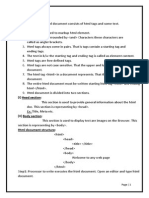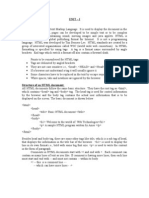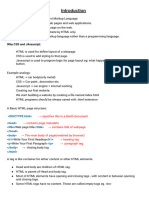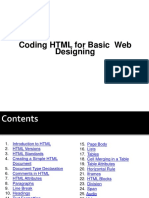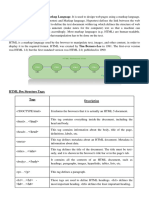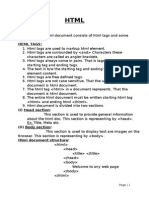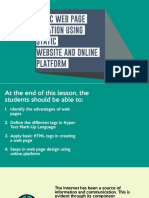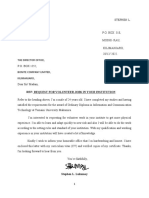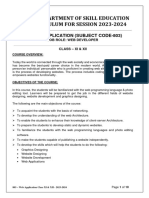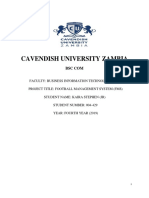0% found this document useful (0 votes)
17 views7 pagesVii HTML
The document provides an introduction to HTML, explaining its purpose as a markup language for creating and designing webpages. It covers the basic structure of an HTML document, common HTML tags, attributes, and formatting options. Additionally, it includes examples of HTML code for various elements such as headings, paragraphs, images, lists, tables, and text formatting.
Uploaded by
bhavyajain5142Copyright
© © All Rights Reserved
We take content rights seriously. If you suspect this is your content, claim it here.
Available Formats
Download as PDF, TXT or read online on Scribd
0% found this document useful (0 votes)
17 views7 pagesVii HTML
The document provides an introduction to HTML, explaining its purpose as a markup language for creating and designing webpages. It covers the basic structure of an HTML document, common HTML tags, attributes, and formatting options. Additionally, it includes examples of HTML code for various elements such as headings, paragraphs, images, lists, tables, and text formatting.
Uploaded by
bhavyajain5142Copyright
© © All Rights Reserved
We take content rights seriously. If you suspect this is your content, claim it here.
Available Formats
Download as PDF, TXT or read online on Scribd
/ 7










